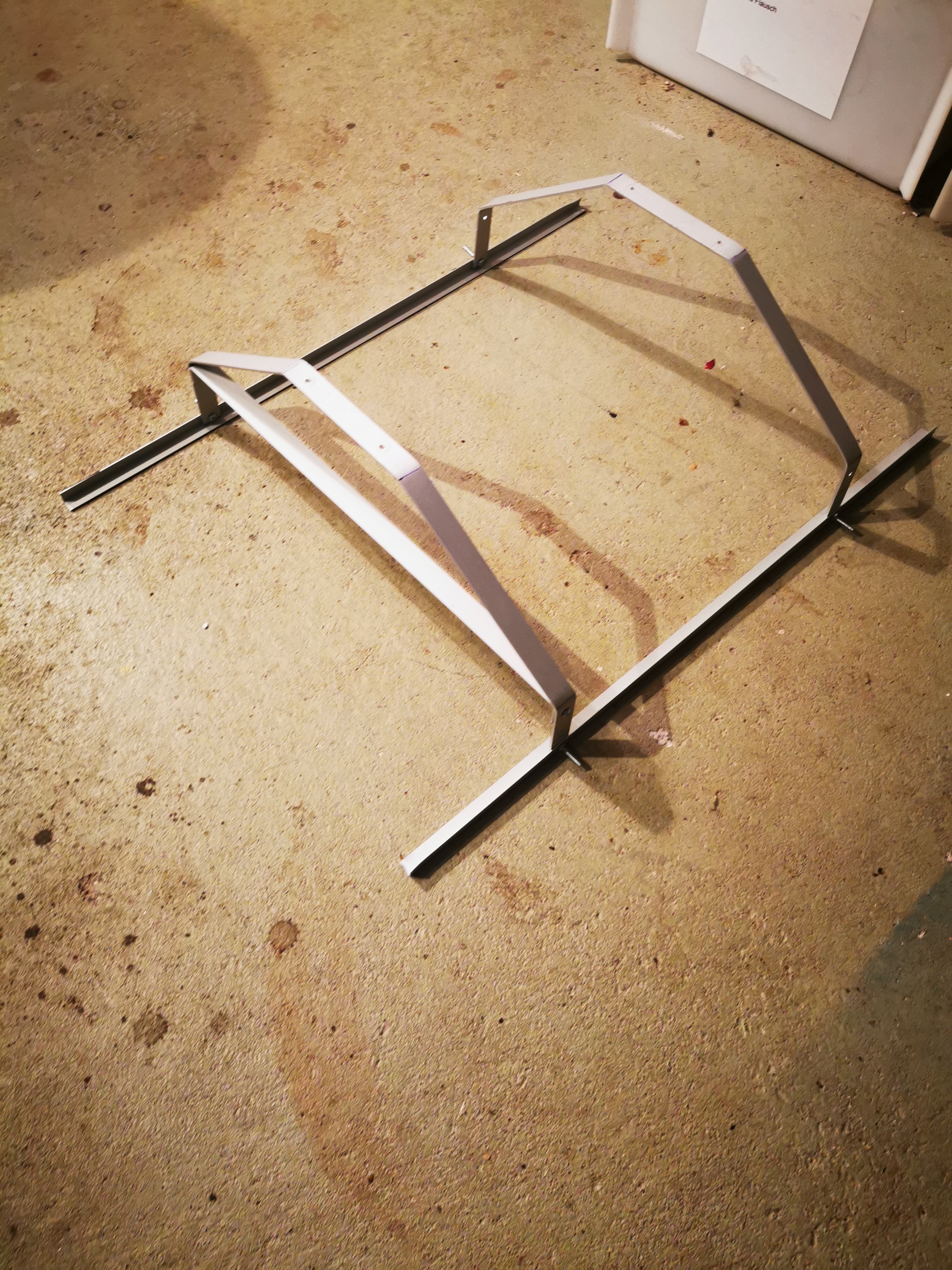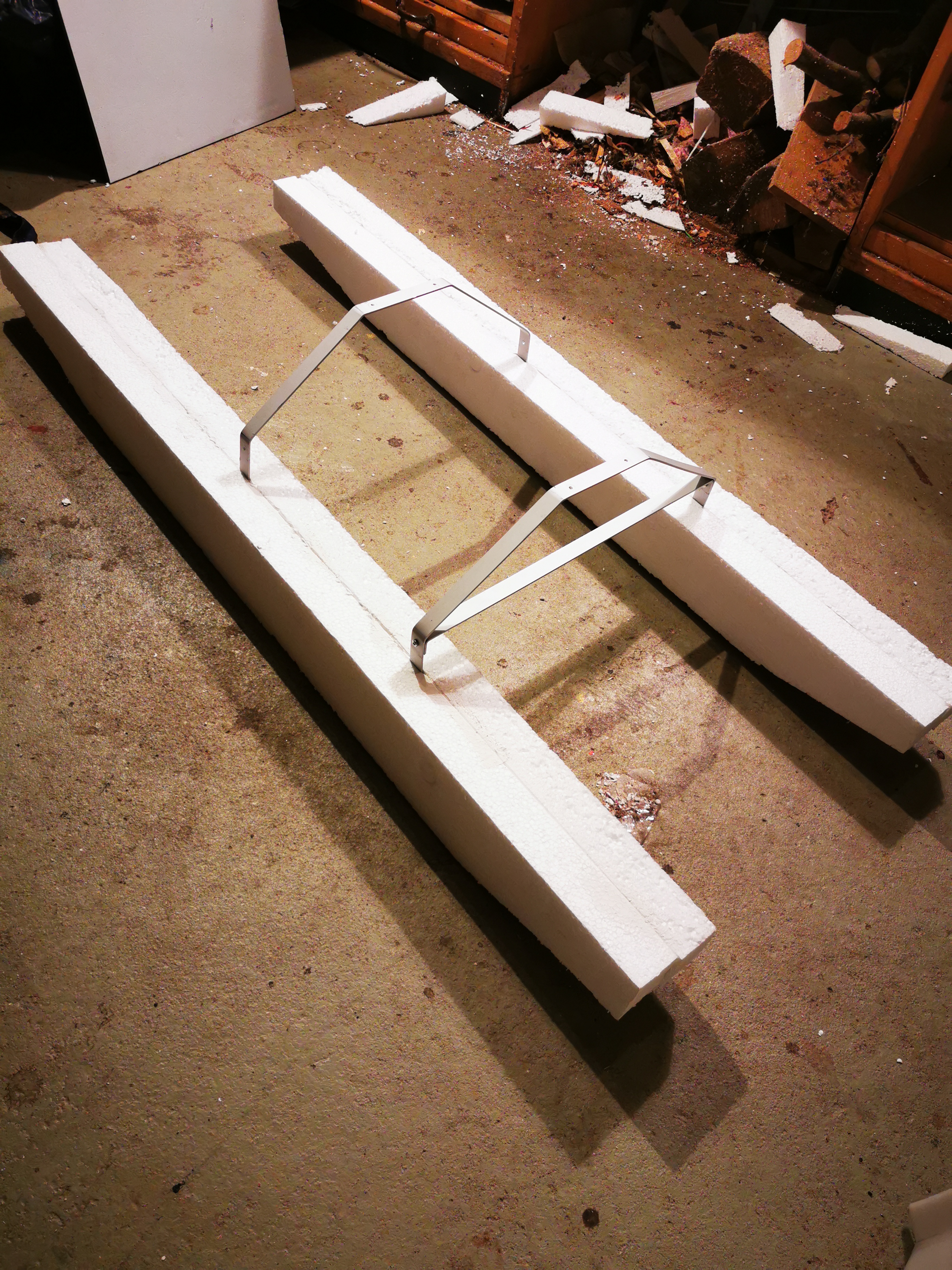Gear
It was probably not such a smart idea to install a landing gear with wheels in advance, because where I live there are either only dirt roads on which you can neither land nor take off the plane and the roads are not wide enough or to start. Nevertheless, before I accidentally sink the plane on a nearby lake, I wanted to try to land the plane somewhere it might cause a 100% loss. Therefore, I ordered a landing gear on hobbyking, which is usually a spare part from a PNF aircraft and just built it under the duck knowing that this might break at the first landing.
Version 1#
To keep the plane level, I had to build an extension between the fuselage and the wheel, which unfortunately is not really stable. In the beginning, the plane weighed only ~1kg, which meant that the landing gear still held to some extent, even during landings on grass. However, with all the installed equipment and reinforcements, it was no longer possible to land the aircraft without losing the entire landing gear.
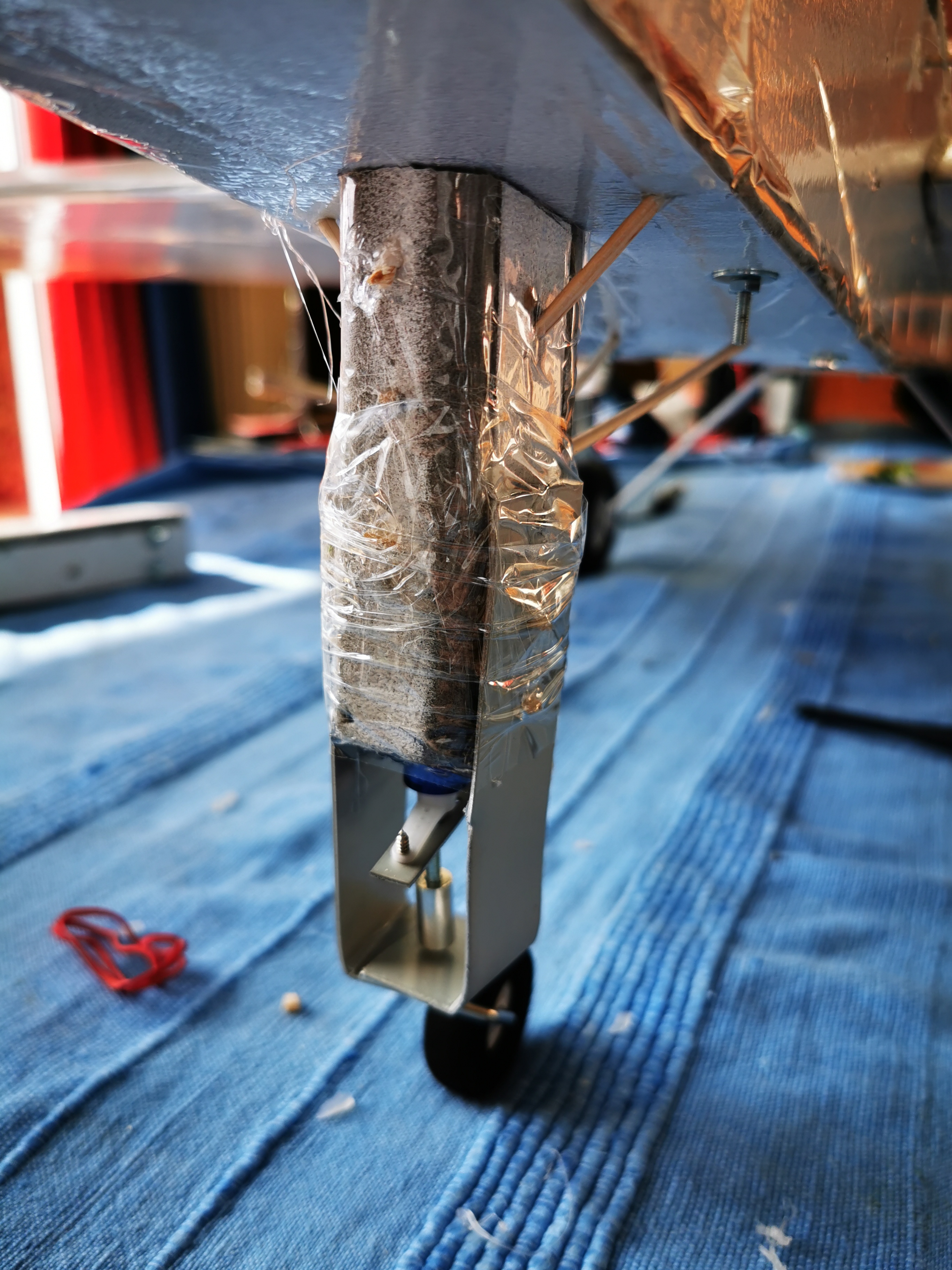
I think I need to accept this until I am sure that a landing without crash is likely.
However, it would be nice if I didn't have to repair the landing gear after every landing.
After the third landing, I felt obliged to do something about it. This led to version2.
Version 2#
I decided to disassemble the landing gear and removed the tons of hot glue I had used in several repair attempts. I moved the two large wheels in the front, just under the edge of the wings. The front wheel is now located at the rear of the airplane with a 60-degree angle pointing down.
During a test launch, I noticed that not only did the stability improve, but the aircraft was even slowed down by the front wheel during takeoff. Now the tail lifts off during takeoff, so that only the two large wheels touch the ground. It is now much easier to get the duck in the air.
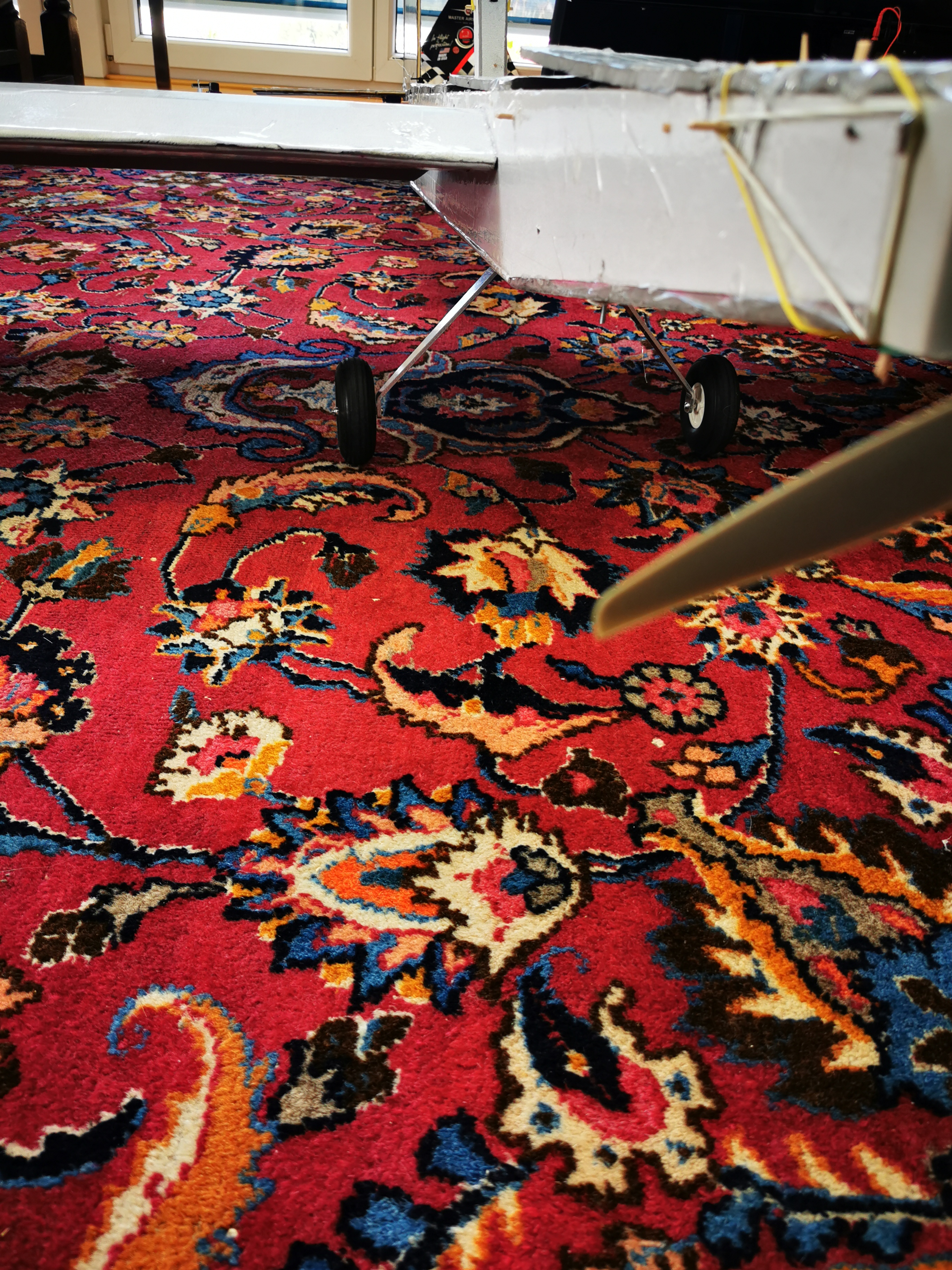
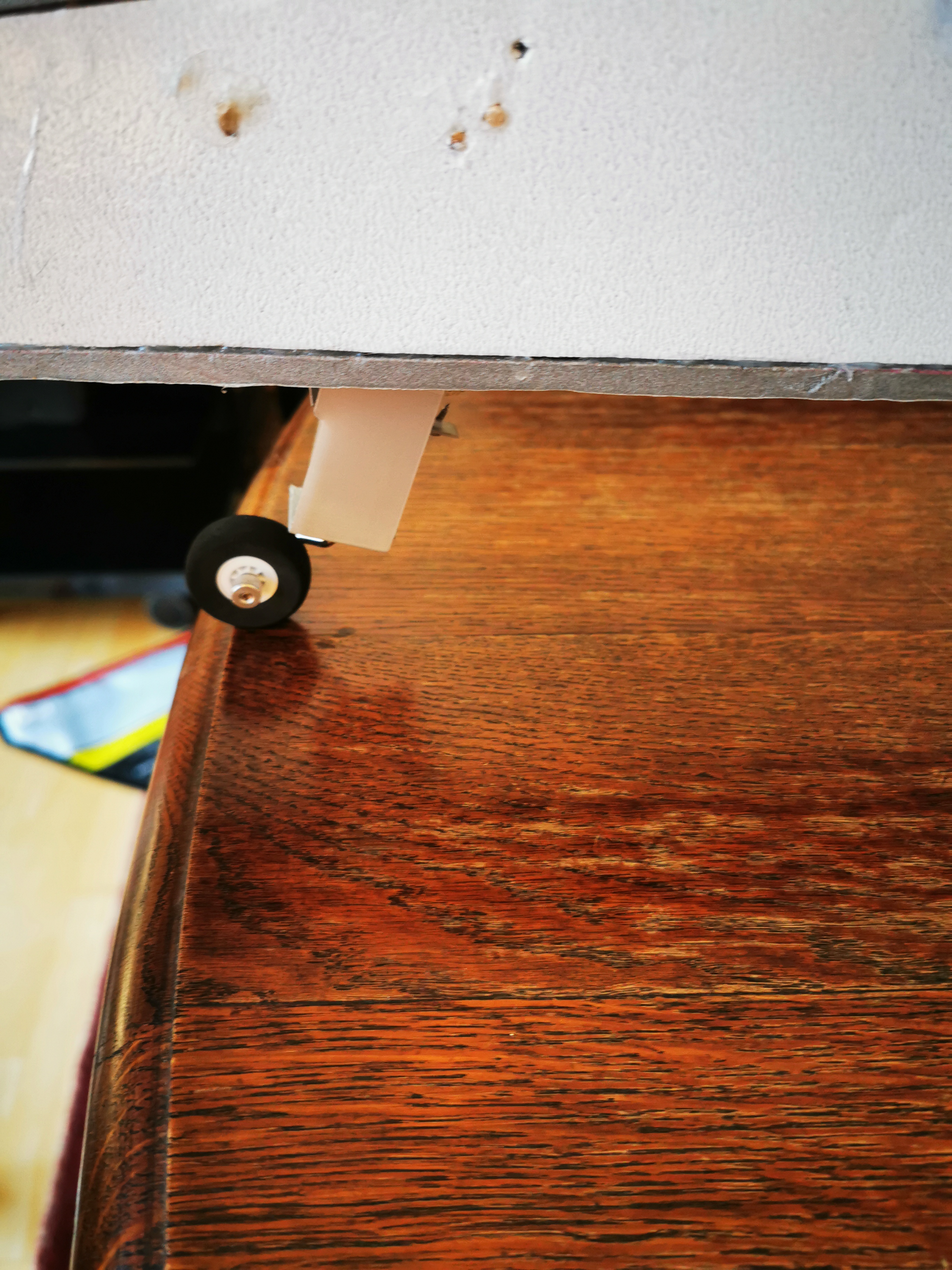
Water landing#
The skids must be able to carry about 2.5-3 kg and provide sufficient stability on the water. I have opted for a trapezoid shape. The runners themselves consist of two styrofoam bridges that are glued together. Between these blocks is an L-shaped aluminum rod, which ensures the stability of the skids.
